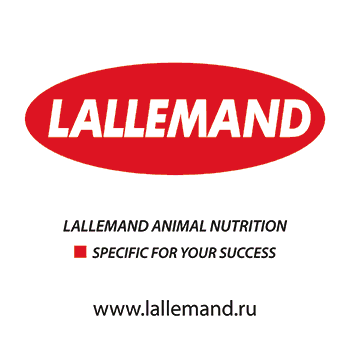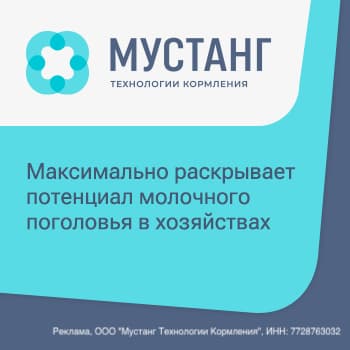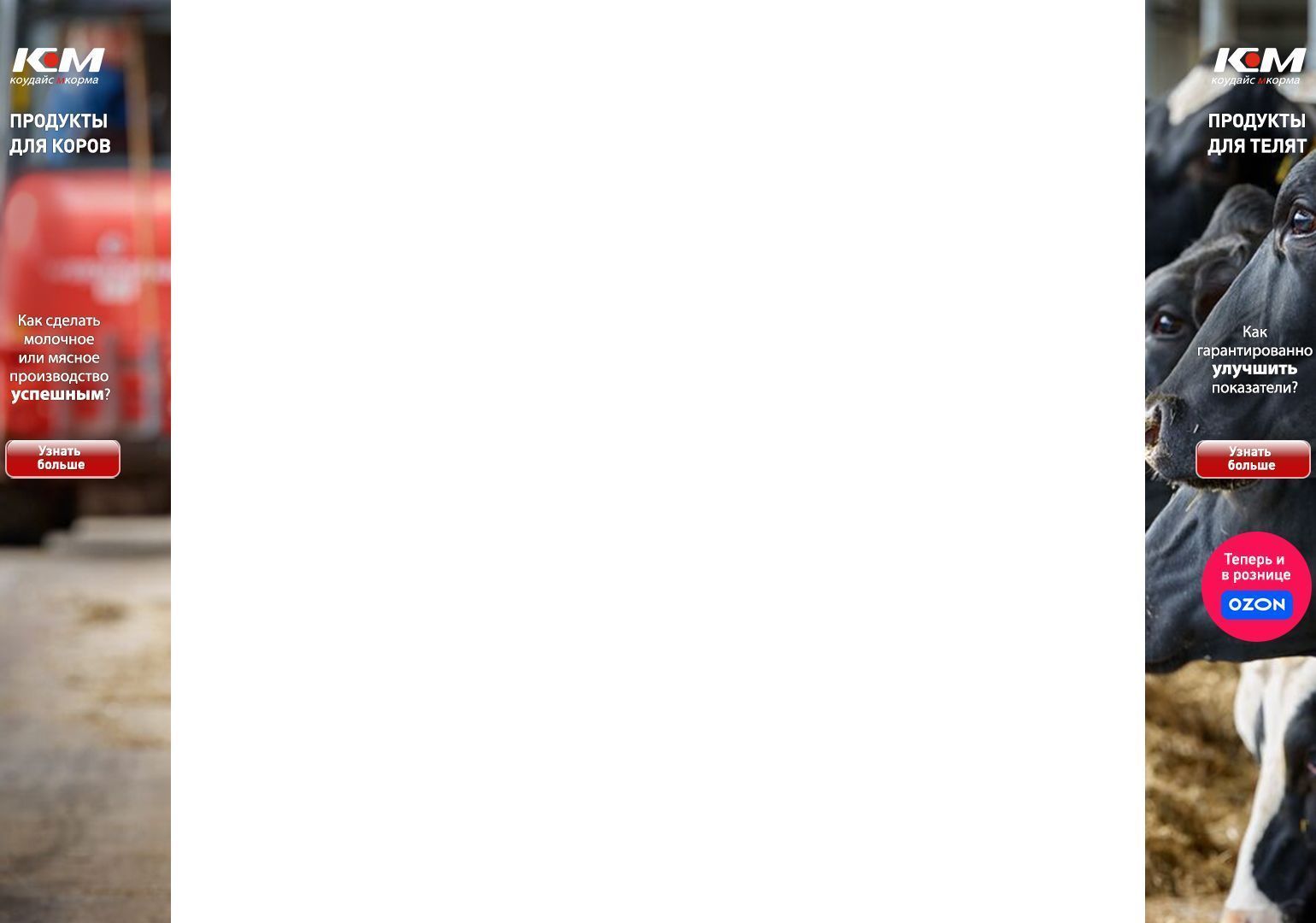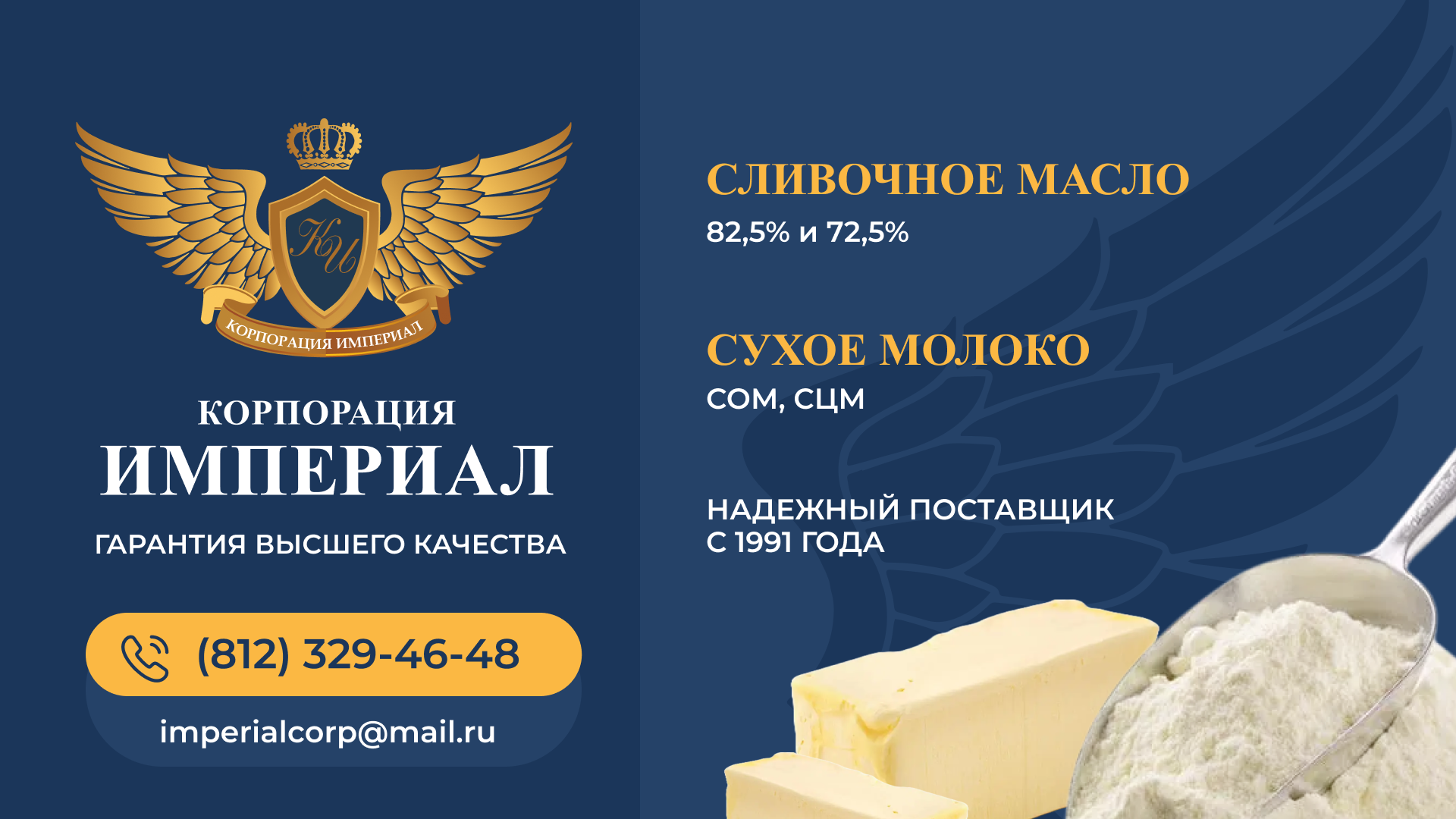Interview with Mark Beck, Executive Vice President, U.S. Dairy Export Council (USDEC)

Agency
DN: What is USDEC? Could you tell about the role of this Agency and its functions?
M.B.: USDEC is a promotional Agency which is funded by farmers. Our mission is to increase the value and volume of US dairy products exports. So in that capacity we really do 4 things.
Number 1 – we advocate our trade positions to our negotiators to get the best deal and make sure that our negotiators understand what our positions are relative to open markets overseas.
Number 2 – we are engaged in what we call non-tariff barrier issues and that relates to some of the barriers, non-tariff barriers that there may be in the market to import. For example, you need to do, in order to export to Russia, quite plenty of registrations from Rosstat, something like that it is called. So we will facilitate that in the negotiations on certifications and help our government negotiate the right certifications.
Number 3- we do promotion of American dairy products: supermarket promotions, other forms of promotions. We do a lot of technical suppositions to demonstrate application of dairy usage in different things. Fifteen years ago we were very active in promoting and educating the use of whey and whey proteins and as you know now it becomes huge mainstream business.
Number 4- we try to insert research in the dairy field, particularly nutrition research. Again if I go back to whey we made a lot of research done to documental efficacy of whey proteins as they particularly relate to muscle metabolism.
That’s really the core activity of the USDEC.
DN: So from the very beginning you told that it is a farmer funded organization. How many members do you have?
M.B.: The organization has today about 125 members. The members of the Dairy Export Council are not only the farmers that are funding through a levy that they are assessed at the farm gate. That is a levy that is imposed by law to support the industry in promotion and research and then we get about 72% of our funding there.
About 23% of our funding comes from the US government where we can get generic promotional dollars as commodity group for promotion. And then we get a membership fees in order to be a product of Export Council the companies pay an annual membership fee.
So we have the entire working supply chain from farmer, producers through the processing companies, whether they are cooperatives or private, export companies and then other companies that have invested interest in seeing US Dairy Export Cooperative.
DN: What is the fee of the members? How much do they pay?
M.B.: It’s fairly modest. I would probably say that the membership income we have is about 1.1 million dollars add of a total budget of 25. So, it’s a small component but that money is important because that money allows us to do advocacy. The other source of funds do not permit us to do lobbying if you call it.
DN: And you told about lobbying into other countries to change laws, etc.
M.B.: I wouldn’t call that lobbying necessarily, our lobbying is more the advocacy work that we do relative to our own government in promoting procedures. The work that we do in non-tariff barriers is by level discussion with regulators and with industry to try to facilitate, for example, the documentation requirements that are required for importing countries and when we have cases like the need for plant certifications we will facilitate that but we are looking of course that documents and inspection documents that we have in our system are also accepted overseas.
Global view
DN: What are the main markets for the US right now?
M.B.: Main market is of course Mexico, Mexico, Mexico.
Mexico is about only 70% self-sufficient, about 30% of their needs they have to import. So that is an important market for us. I would say probably around a fourth of our exports in volume in value goes to Mexico. So our export to Mexico is about 1.2 billion dollars but Mexico also has an export boarding point to the US of about 350 million dollars.
DN: What is the place of Canada?
M.B.: Canada is a problem child. Canada is not in the spirit of the NAFTA agreement for dairy, in our view executed their obligation. Our exports into Canada have been in the tune of 500-600 million dollars and it’s an important market and always been a very difficult business. As you know right now we have an issue with Canada as it relates to some actions they have taken to basically choke off. They bet a 120-million-dollar business in export of cooled and filtrated milk protein into Canada.
DN: Mexico is number 1 market. What is the second and third markets?
M.B.: The second market is South-East Asia: Malaysia, Singapore, Indonesia, the Philippines, Thailand and Vietnam.
And then our third largest market will be China. Аnd then Canada and then I would say Middle East and the rest of the world.
DN: Have you seen any changes after Russian ban?
M.B.: The import ban of dairy into Russia has not directly affected the USA, as our trade was not really that huge.
The indirect affect that is has- the European milk mainly in the form of cheese that moved into Russia (about 200 thousand tons of cheese) that disappeared and as a consequence they are off. The Europeans had to redirect that lost business somewhere else and that has combined with research and production has put a strong competitive pressure in the market and where we were steadily gaining increased volumes in dairy market shares.
DN: Does American market use such a tool as intervention?
M.B.: We don’t have intervention in the United States. What is happening right now is that our commercial or private inventories are at an all time high. And, I would probably say, that’s not necessarily a consequence of the Russian ban although we’ve had competitive pressure from particularly Europe in some of the volumes in markets that we have in Japan, Korea, South-East Asia and also in China.
The consequences of that have- our cheese prices are very competitive.
DN: What is changing now with current US President administration. Do you think these changes could have some influence on the Russian market or maybe the global market?
M.B.: Relatively to the US or the ban, I think the dairy card is more in the Russian hands, whether they want to open their market than it is in our hands.
I actually think Trump is very much pro-trade, he markets himself as an ultimate deal-maker. I think he wants to re-negotiate trade deals. Now the biggest consequence when he got into office was withdrawing of the US from the TPP negotiations that has a lot of people concerned.
We are generally disappointed that TPP was cancelled. We felt there were some good things there, particularly in SPS (Sanitary and Phytosanitary rules) that was good, but I think the announcement is made that he is now order these trade negotiations to actively engage with Mexico and Canada to modernize.
There are new technologies; there are new things and for instance, the issues around ultra-filtrated milk that is going to Canada, that Canada now has blocked. There was not a business.
If you remember, the first head of the state that visited Trump after he was elected was Premier-Minister of Japan. And two days after he came to visit Trump in Trump Tower. Japan is a big trading partner. I think Trump has some issues surrounding Japan straight particularly of mobiles and all that stuff, particular parts.
China, I don’t know. China is very complex. It’s not only trade, it’s not only dairy trade. China becomes a greater economic country in the world.
So I think we’ll have to wait and see.
DN: How long should we wait to your point of view?
M.B.: Let’s wait another 4-5 months, let’s see what will be happening after. Let’s see what will be happening with Japan. Let’s potentially see if something will happen with relationship with China.
DN: It is very interesting that now everything is changing in the world. Do you have a forecast of medium-term, long-term changes on dairy market?
M.B.: So I think the world is already sole into twilight. I believe in free trade. Free trade will actively economize, that will spur universal wealth. It will spur consumption.
I think from the US perspective there were bilaterals, I suppose multilaterals, but dairy is just a small part of the bigger picture. I think a big issue for the United States has always been intellectual property rights and protection of that, issues surrounding steel and automobiles of dumping, it’s a big issue. So, there are many other issues above that but focusing on dairy the world needs global dairy trade.
I believe global dairy trade will increase. It still represents a very small part of our global production, about 8 – 9%. Here is a reality. The demographics of where the population grows, where the income grows is in the emerging markets. I can’t reach that and it can’t be self-sufficient. Here is a very interesting step.
I mentioned to you that Mexico has about 70% of self-sufficiency. Twenty years ago Mexico had 70% self-sufficiency. Today they still have 70% self-sufficiency. What I’m saying is that the pie is much bigger.
China today is about 77% self-sufficient. I think there is a little different dynamic there. And even the Chinese fore projections are that probably within the next 5-8 years their self-sufficiency rate will be also at about 70. But the movement of these 7% over the imports is going to have a profound effect on global dairy trade.
Middle East, if you take north of the Middle East historically, culturally they are very friendly in the dairy they are not going to have self-sufficiency, big populations. So I think over time, and the conventional wisdom has always been, that over time the demand is going to pull the need for the increased production in the traditional milk, for sure.
I don’t see Russia in a foreseeable future moving to total self-sufficiency. These things happen, it takes time to happen, you talked a lot about the genetics, that’s an evolutionary process. China because of the regions has been able to import the genetics but that is not a sustainable business practice. So you know, you have to evolve your genetics, efficiency, supply the efficiency, production efficiency – this is a long way ahead of that.
DN: What do you mean by production efficiency?
M.B.: Meaning scale.
DN: And what is the future of the European Union dairy market?
M.B.: I think the problem in Europe is the imbalance of the European dairy industry. If you look at the dairy built versus the South and South-East the efficiencies are all in Ireland, Holland, Denmark, Poland. Poland is a very interesting milk shed. And I think they will always produce milk, they have a large domestic market as well. Here is the interesting part and even the EU dairy industry doesn’t understand it very much.
8-9% of European milk is exported outside Europe, in New Zealand it is 98%. In the US it’s 15%.
America exports almost double as much of our percentage of milk to the world market. So, in a sense, our risk is greater than in Europe and we need the export market more than Europe.
Nowadays dairy is probably one of top-5 commodities in terms of volatility. And the real challenge is managing your supply chain and managing that risk. We are working on that.
Business will change in terms of its risk management, the volatility and with communication today you have a lot of volatility because communication today is instant. And if you look at dairy market, it has been my view too, the dairy markets are highly emotional.
DN: In your opinion what is the role of International Dairy Summit in the dairy market right now? Does this organization have influence on market?
M.B.: To be honest I really don’t have a strong opinion of their role, I don’t interface a lot with IDF. I don’t think there is a great role for them to play there.
They have the platform around dairy science and the codex which is hugely important. So I think there’s relevance there. Five-six years ago there were disaffection with some of the undertaken ideas and they created the bigger companies Friesland, Arla, Fonterra, a couple of American companies DAV and others, created their platform. I think there was some disaffection with IDF’s ability to communicate and protect, to communicate about the goodness of milk and dairy and protect it against it a lot of this outside group that are infringing on dairy.
I think IDF has a role but mostly in standards and in the science around identifying standards.
I’m sure that over time they will find their identity and I think they have relevance but in that narrow space around course.
DN: I found that not many Americans and representatives of American industry usually take part and tend to vote in the International Dairy Summit. Why?
M.B.: That’s not true. The Dairy Export Council represents the industry along with the Processors’ Association and some other groups. We represent the industry and have discussions with the government and the Codex discussions. Within the science, science communities and all this stuff we have representations in the science communities as well from industry and as well from our Academy.
We are represented there.
DN: And to your point of view what kind of organizations are really affecting the dairy global scale?
M.B.: I’d like to think that we have. Then I think the European Dairy Association, which has global footprints, Fonterra in the New Zealand dairy industry, just to less extent maybe Australian dairy Association has a very strong footprint in the national dairy industry and historically had that for a long time.
DN: Could you enumerate the factors that do affect on European dairy price of raw milk? And do these factors differ from American factors?
M.B.: I’m not an expert in European milk pricing but as you know they essentially have one milk price that they are providing, and that’s a mix of returns that they get from market place with a fairly broad portfolio. But ultimately supply and demand is a key factor on determining price. Anywhere in the world, what’s happening with some of the evolution of the processing in the industries we have more complex system in the United States because we have separate prices, we have 4 classes of prices.
DN: Could you describe them?
M.B.: Class 1 is the drinking milk, city milk, we call it, basically from the bottle.
Class 2 represents other fresh dairy products, cottage cheese, and those types of products, yogurts and those kinds of things.
Class 3 that quite frankly is the most important and that’s for cheese.
And then we have class 4 is your butter and powder.
This is the pricing system is able to secure value for milk in these different categories and that is a price that is determined on what the market place gets retroactively.
DN: And how is milk logistics organized from the farmer to the processing company?
M.B.: Most American farmers belong to cooperatives where they supply milk which then is distributed to processors. Independent farmers have negotiations directly with processor on the milk price. There has been an evolution of the farmers who are vertically integrated. The best example is Hilmar.
Hilmar Ccheese is owned by 8 farm families that decided to invest upstream but they are separated the farms of one and they have to get the milk price that mended by law and then they process their own milk in the limited liability.
DN: You have already mentioned such kind of problem as volatility of price and at this moment, even at World Dairy Summit in the Netherlands it was rather well discussed. To your point of view is it possible to somehow solve the problem of volatility or will it exist anyway?
M.B.: I think it’s always going to be with us. So individual companies and farmers have to use the hedging tools available to manage price risk. You’ve seen in the United States and also a little bit in New Zealand and also in Europe the establishments of markets basically Chicago market exchange, Eurox in Europe and with NZX GDT in New Zealand whereby a supply chain can manage the risk or hedge through hedging programs. In the United States a lot of cooperatives now provide this management practices for their farmer members.
Demand and supply don’t run in unison, there are constantly interruptions, there are weather related things, there are trade issues that can impact markets, there is a speculative demand. If you look at 2013 – 2014 the demand explosion in China was basically growing. Then demand in China bubbled out for 2013 - 2014. But the speculative buying that occurred in China had huge implications on prices going to the moon and what happened in 2014 – a crash. And to some extent New Zealand in particular was very-very highly affected because they wrapped up their milk production to meet this demand that was really not a sustainable demand over China.
DN: Do you think is it real that the world will reach the agreement on milk production?
M.B.: I see actually demand continues to grow and mainly driven out of the emerging economies of the world, not only China, South-East Asia, Middle East, and people talk a lot about Africa now. I think Africa is still some ways off.
The reality is that there are really not many places in the world where you produce milk effectively. Europe will continue through efficiency to have more milk. I don’t think to the extent that they think they are going to have. New Zealand will still continue to see but production will change, as the cost of production will change.
Australia can produce more milk right now as it is going through a number of difficulties partly as a consequence of nature but also some industry dysfunctionality.
Argentina for the first time increases milk production in April after a long decline. They have a lot of supply chain issues but there is a potential milk shipping which has been there for a long time. I think they will eventually come.
Brazil is not there. Their supply chain is still an issue.
Let’s walk through the world. China is kept high in production. Canada can produce a lot more milk. I think the US is a good place to be. Turkey could be an emerging milk shed. Ukraine, potentially Belarus, still got some evolution.
But overall I still think milk will be produced to meet demand and a cost profit. Milk will continue to grow up to cause demand.
DN: If we speak about internal markets what kind of products and from which countries are imported to America?
M.B.: While we export a lot we also import. So I told you we export about 15% of our milk, we import about 3% equivalent to our milk production. So we are a good reasonable import market. The USA used to import about 90 thousand tons of cheese. We import cheese.
DN: From which countries?
M.B.: Mainly from Europe and also a bit from New Zealand. These are mostly table cheeses. But there is an interesting little factor. Since the Russian ban appeared we increased our import from about 90 thousand tons to 130 thousand tons. So we have increased our import by about 40 thousand tons. The average export price for the Europeans to Russia was about 5 000 dollars. The average value of the exports into the United States is about 7000 dollars. So actually the Europeans have done OK. They have a better market. Conventionally, the US has an opportunity to export into Europe that virtually is not existent.
We import a little bit of butter fat a little from Europe, mostly table butter. And with international prices relative to our domestic prices.
We import some cheeses from Argentina and Europe under quota arrangements. So we are also an import market. We are not instituting any other measures to protect it. We feel very confident there. We are about as open and balanced as any market in the world.
DN: Does the government support somehow Wisconsin state in order to solve the problem which was caused by Canada?
M.B.: No. The only thing that the US government is doing is put pressure on the Canadian government to change their behavior, or change the new class prices they have instituted the class 6 and class 7 prices they’ve instituted.
Internal challenges
DN: What kinds of challenges do American farmers face at this moment? I understand the conflict with Canada, but still maybe some kind of internal challenges?
M.B.: The internal challenges unfortunately we have seen is declining consumption of liquid drinking milk. That’s a challenge that has been around for a long time.
DN: To your point of view, why do you face this challenge?
M.B.: I think, it’s because of alternative beverages. As soon as you leave home you drink Coca-Cola, sodas etc. Yet we have responded as the industry with new types of dairy beverages. And I do have that also.
The other challenge I think for the industry is cheese-focused, we need a new eating occasion for cheese. We’ve got pizza, we’ve got sandwich processed cheese, we’ve got snaking. When I go to Europe and I’ve been a European cheese and even here. I’ve noticed cheese is very prominent at the breakfast table. We need more cheese at the breakfast eating occasion.
So that’s on a demand side, the other challenge is dairy needs to be a lot more close to innovations. We need to look at dairy in a different way and we’ve already done this path - protein, dairy protein, in particular whey protein also has now got the whole new platform through nutritionist space, we’ve seen innovations in convenience.
The other challenge that we have is to use in science technologies as production enhancing methods. There was a discussion also at the conference around – we are 6.5 billion people and we are going to be 9 billion people very soon. How are we going to feed them? And how are we going to feed them with dairy? And I think the challenge right now – you have the American consumer and you have the European consumer that is a fairly athlete and can afford to select the food. You still got a huge population base here that the food budget is such a big proportion of their income that they don’t have. I think the challenge of when that we are going to make sure that we can produce dairy at the economical level that people can afford it.
So the big issue that we have in the United States and also the Europeans is the issue around production enhancing science. The challenge is that a lot of people object it, they want organic. But the problem with organic is if you want organic then you expose a greater risk to natural born illnesses like salmonella. So the challenge what we have is where do we come out on a scientific evolution to allow us, and that’s today 50% of US milk is produced by production enhancing methods and 50% is not. We believe that consumers should have a choice.
Personally
DN: Did you like Dairy Olympics? Why did you come there?
M.B.: Yes, of course. I actually came because it was very helpful to understand some of the issues that go on in Russia. Сlearly, the Russian market is a market that is important for global dairy trade. The ban is not good. I didn’t come with any illusion that there is going to be a solution to that issue.
It was interesting for me to understand the relationship between Russia and the Belarus supply chain that had now evolved. I thought that Belarus is surpassed or substituted for Ukraine in terms of being a milk shedet for a supply base for Russian demand. I share your industry’s frustrations and discussions around analogue cheese or alteration of dairy products. That’s a huge issue. I’m surprised to some extent of the complexity of the issue.
I have always viewed the Russian consumer as very dairy-friendly in terms of wanting true dairy, wanting true fat, want real fat in the diet, real butter, real fat in the cheese.
DN: Could you say some words about yourself? At this moment what are you responsible for? And what are your plans? What is your background?
M.B.: My role in the Dairy Expert Council is let the organizations and all experts develop their activities and creating the programs that we do to support our industry growing internationally. That’s my primary role.
DN: How long do you work in USDEC company?
M.B.: I’ve actually been there for 20 years. It was started in 1995 and I joined in 1997. Time flies.
And I truely believe in the American Dairy industry. The American dairy farmer is very efficient and productive. The American dairy industry has an enormous amount of potential and a lot of respect from our dairy farmers and I’ve really enjoyed. I’d like to see our footprint a little bigger in the world but, you know, maybe within the next 10 years we will be exporting 20% of our production. That would be interesting. Because the exposure and the risk is going to be fairly significant. But I do anticipate over the next 10 years there is going to be a dramatic change in the industry, largely in global industry. I think as we talked about earlier, it’s highly capital intensive, a lot of the processing assets are owned by farmers’ cooperatives. That doesn’t have a strong balance sheet and investments in new technologies, new innovations is going to require a lot of money. I see future of the industry in a greater concentration and also possibly with a stronger inflows of third party investment capital. That’s going to be needed to grow the industry. So I do think that is going to be changed. Volatility is going to be there. That will require different tools, different management expertise but I think dairy is a good place to be. I mean after all, it’s nature’s perfect food. We have fat which is good for you, we have protein, we have carbohydrates, the lactose, we have minerals and we have vitamins in a glass of milk.








